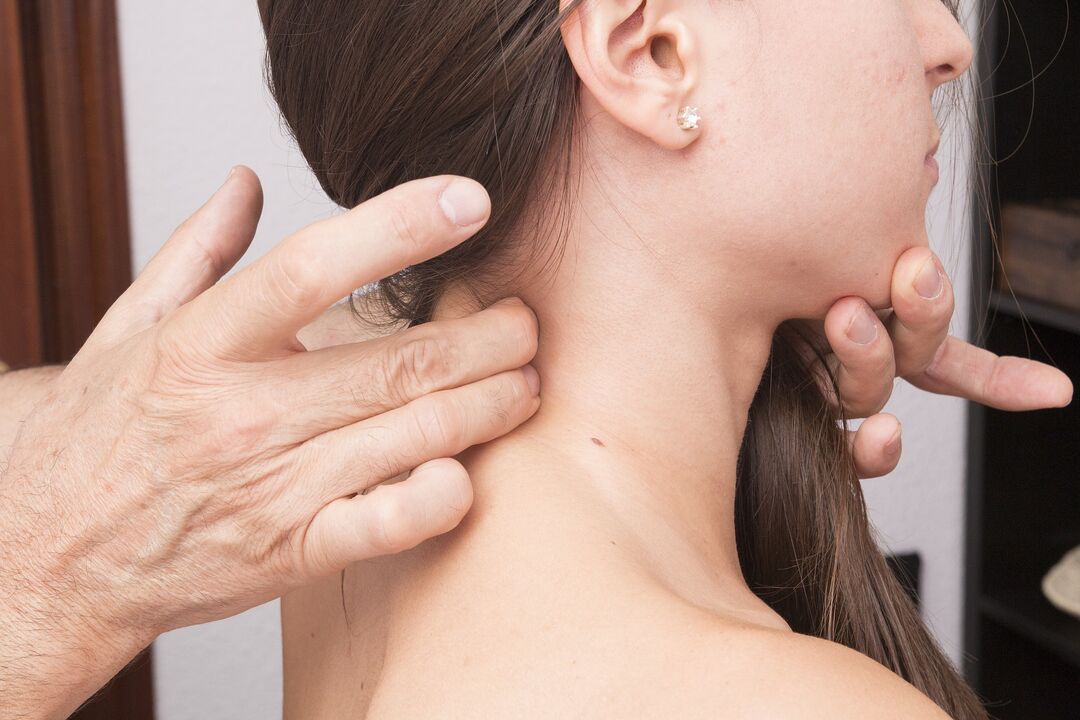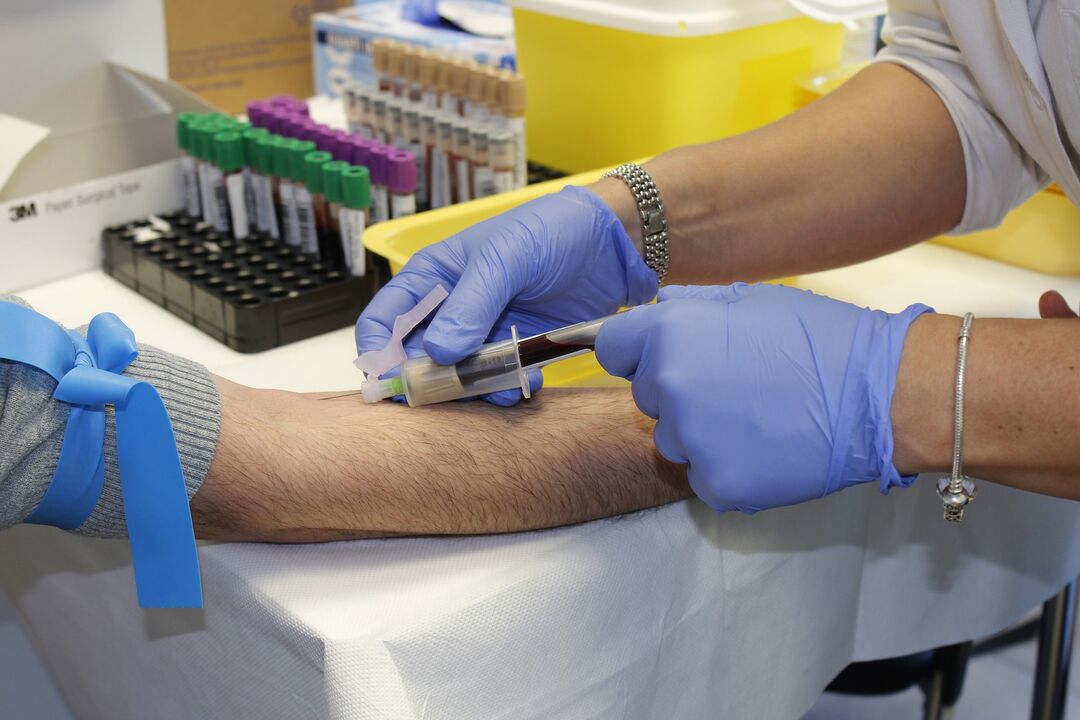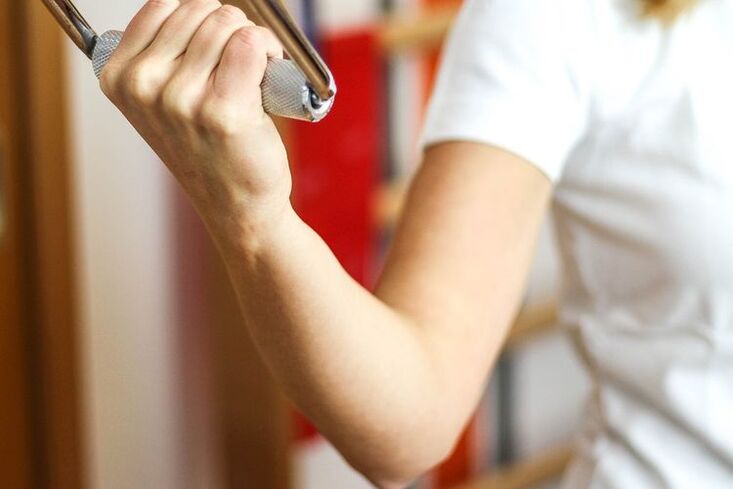Neck pain is a symptom that modern people experience very often, regardless of age and gender. The most common reason is working on the computer for a long time. And in general, a sedentary lifestyle greatly aggravates this problem. But this disease cannot be put aside, because the neck is an important part of the body. It consists of seven vertebrae and contains numerous arteries, muscles, nerves, organs and glands.

Pain may occur due to a seasonal cold or a more serious illness, injury or sprain. There are other factors that can influence whether you have neck and head pain. We will analyze them in more detail in our review, and also consider methods of treatment and prevention of congestion in the cervical collar area.
Nature of pain
Sometimes the neck hurts so much that it is difficult to understand in which direction the lesion is located. However, analyze your condition and try to determine the nature and location of the pain. This will help you decide what to do next. There are different types of neck pain:
- Acute – indicates malfunctions in the functioning of the body.
- Chronic – continues for a long time, subsiding and increasing again.
- Visceral – the cause is damage to an internal organ.
- Superficial – these are usually minor lesions on the skin.
- The inflammation of the tissues is deep.
- Central – associated with problems in the nervous system.
- Neuropathic – a disorder of the peripheral nerves, but the painful points are not affected.
It's a dull pain
Aching, oppressive pain is often the body's reaction to unusually intense physical activity. You can feel it the day after training. Under the effect of stress, lactic acid accumulates in the muscles. It gives signals to nerve receptors, this process causes a painful sensation of pain. When you put pressure on your upper body, not only does your neck hurt, but your back and shoulders also hurt. But there are other reasons:
- rachiocampsis;
- myalgia;
- inflammatory process in the muscles.
Acute pain
Sharp and painful shooting attacks significantly complicate any movement. Living with these symptoms is very difficult, so start testing and treatment immediately. It might be:
- osteochondrosis;
- vertebral displacement;
- neuralgia;
- intervertebral hernia.
Why and what does it hurt?
Pay attention to which side of the neck it hurts, if there is discomfort when turning, perhaps the lumbago radiates to the head or back. Every detail is important before starting treatment.
Only on one side
If the pain is localized only on one side, then there may be several factors:
- Hypothermia - a draft or walking without a scarf in the cold season can cause discomfort.
- Muscle Spasms – Working hard in a workout or carrying heavy weights can cause your muscles to overwork. Remember, if you have been carrying heavy bags in the next few days, this might be the reason.
- Uncomfortable bed – over time the mattress may sag and the pillow may become uneven. And simply an unnatural posture during sleep can lead to increased pain in the neck area. Maybe you need to change something in your sleeping area.
- Cervical radiculitis is a consequence of the development of osteochondrosis. With this disease, the activity of the spinal nerves is disrupted. The result is sharp pain on one side of the neck.
- Tendon inflammation is an acute process that occurs in the shoulder joints and can cause pain on the right or left side.
- A retropharyngeal abscess is a complication that can form in cases of advanced sore throat. Purulent processes spread to neighboring tissues, leading to the formation of an abscess.
All these cases are not uncommon and the pain disappears within a few days. There is no need to consult a doctor. But there are also more serious situations when the neck hurts on one side - this is an injury caused by a strong turn of the head. This condition is also often observed in pathogenesis if the patient suffers from a serious infectious disease, for example, tuberculosis.
Behind
The cervical region is made up of vertebrae and constitutes the most mobile, at the same time the most vulnerable, part of the spine. Therefore, if the neck hurts, there may be several factors of different nature.
- Osteochondrosis - in this case the neck hurts mainly in the back. The intervertebral discs become fragile and deformed. Hence: the appearance of neck pain - a disease originating from the field of neurology. In this case, the patient feels aching, stabbing pain. The hands and back of the head become numb.
- Spinal stenosis is a spinal disease that is often located in the upper part of the spine, so it may be the reason why the neck hurts. The disease progresses due to narrowing of the medullary canal and may be accompanied by numbness of the limbs.
Deep in my head
The neck and back of the head are in direct proximity, which is why these two parts of the body often share conditions. Pain in the back of the head may occur due to:
- Sprains. The neck muscles are adjacent to the back of the head, so any damage will cause a headache in the back. This area of the body will react particularly strongly during large movements, such as jumping or brisk walking.
- Problems with the spine. As we have already stated above, the neck is made up of vertebrae and the back of the head is closest to the first. Therefore, often, when there is a violation in the ridge
headache in the back of the head.
Causes a headache
The cause of headaches due to neck pathology may be stagnation of blood flow in the ridge.
- Sedentary lifestyle - at work you sit motionless at the computer for several hours, and when you come home, you do the same in a relaxed atmosphere. Many people live like this now. Therefore, neck pain radiating to the head is not uncommon. At the same time, a feeling of weakness and apathy appears. At risk: drivers, office workers, programmers, operators.
- Sudden movements – a strong turn of the neck results in a pinched nerve, which pierces and can radiate to the head.
- Stress. The psychogenic factor also plays a role in the onset of the disease. Constant nervousness and emotional overload cause tension in the neck muscles and neuralgia.
Growing bump
Overgrowth of tissues, accompanied by high body temperature, indicates that inflammatory processes are occurring in the body. The bumps hurt a lot, you can't touch them and the body is weakened. A swollen lump on the neck is a sign of a serious illness.
- Infectious diseases - the flu or a sore throat can cause a lump to appear. Pain is a sign of purulent inflammation. One of the main symptoms: it hurts the patient to swallow.
- Oncology – neoplasmic processes in the lymphatic system result in physically visible growths.
- A weakened body – the immune system gives alarm signals.
Neck and shoulder pain
Pain in the neck and shoulder girdle, combined with the growth of a lump, is an eternal companion for people constantly engaged in heavy physical labor. The main problem here, just like in the previous case, is the growing lump. Only without high temperature. The formation causes pain when touched, but not so sharp. However, this factor negatively affects the neck and shoulders. You can get rid of unpleasant sensations by changing your type of activity to something easier on the body. A lump can be a sign of:
- Fibrolipomas, lipomas or atheromas - the formation can grow from the size of a large wen to a visible bump. The growth process is reflected in the neighboring parts of the body.
- Tumor – to carry out an accurate analysis, you should contact an oncologist.
What to do?
If the pain does not subside after a few days, then you need to go to the hospital. Doctors will carry out an examination and to get a complete picture you may need to undergo additional tests:
- Tomogram.
- Cardiogram.
- Ultrasound.
- Blood test.
- X-ray.

After undergoing a series of examinations, the doctor will draw a conclusion and prescribe the necessary procedures. In the treatment of the cervical collar area it helps to:
- Therapeutic gymnastics - a health complex will help to normalize the processes taking place in the cervical region, as well as throughout the body.
- Massage – performed only by specialists in manual therapy; self-massage can only be performed after training with massage therapists.
- Drug treatment - antibiotics and painkillers will help eliminate pain as a symptom and cope with the cause of the disease if it is infectious in nature. In other cases, tablets are selected strictly individually.
- A series of injections - the active substances contained in the injections have better bioavailability, which means that relief will come much sooner than when taking pills.
- Acupuncture is a type of oriental therapy in which the influence on certain points of the body can significantly improve the condition of the body. It is best to do it in combination with a classic massage.
- Electrical stimulation involves using a pulsed current that helps dilate blood vessels and tone the body.
- Treatment with leeches - these worms are capable of saturating a person's blood with useful components. Among them, hirudin is an anticoagulant, a substance that helps improve blood circulation and hematopoiesis.
Gymnastics for every day
Therapeutic exercises will become an effective preventive measure. Just 10 minutes of exercise in the morning and your neck muscles will become stronger and your back more flexible. Perform all exercises 5-10 times.
- Sit up straight in your chair. Slowly and clearly turn your face to the right, then to the left.
- Lower your chin and reach the top of your head toward the ceiling. Tilt your head back and feel the front of your neck stretch.
- Keep your back straight, tilt your head parallel to the ground. Take your chin with your right hand, turn your face to the right, feeling how the side of your neck is stretched. Do the same with your left hand towards the left.
- In a standing position, straighten up, raise your shoulders and leave your arms at your sides. Freeze for 10 seconds, relax.

Folk remedies in the fight for neck health
Taking your grandmother's remedies to maintain your health will only improve the results of your treatment. Especially in combination with other methods. Note the recipes:
- Chicory infusion. Pour a glass of boiling water over a spoonful of herbs and leave for two hours. Strain and drink in small sips throughout the day.
- Mint compress. Pour the mint leaves into a glass of water and let sit for several hours. Dip a cloth in the mixture and apply it to the sore spot.
- Mumiyo ointment. Mix the honey, red pepper and mumiyo and simmer in a bain-marie for 30 minutes. Allow to cool and apply like an ointment.
- Echinacea. Take the medicine three times a day to strengthen your immune system.
- Add 100 g of honey and the same amount of chopped lard to a glass of warm milk. Take one tablespoon during meals.
The methods described here will only be useful in mild forms of the disease. And prevention will protect you from it in the future. If the disease causes acute discomfort, do not self-medicate, consult a doctor as soon as possible.


















